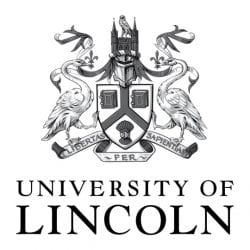The University of Lincoln is supporting a new arts festival which will take place in venues throughout the city.
Lincoln Inspired is a community-focused arts festival that is set to run from 7th to 12th May.
The festival will see a range of acts, shows, music, comedy, film, theatre and events take to the stage at a multitude of locations around Lincoln, including venues across the University of Lincoln’s Brayford Campus.
The Lincoln Performing Arts Centre (LPAC) will play host to several audio ‘Radioramas’ including The War of the Worlds, The Mighty Boosh and Talking Heads as well as a performance of Commuter Jazz.
Julie Ellerby, LPAC Marketing Manager, said: “Lincoln Inspired is a festival with the community at its heart, and here at LPAC we are very proud to be contributing to the festival programme. It has given us the opportunity to explore and experiment with something a little different by hosting a series of radio dramas in our Zing Café Bar.
“The festival is supported by a fantastic mix of theatres, cafes, pubs and arts organisations in the city, which we hope will encourage the people of Lincoln to visit places they may not have been to before, and try or see something which they wouldn’t have had the opportunity to without Lincoln Inspired.”
The University is also hosting a Twitter Breakfast on Friday 10th May, where a panel of Tweeters from local companies will discuss the most inspiring things about Lincoln. The breakfast will take place from 8am – 10am at the Book and Latte in the University’s Business and Law Building.
Zoe Homes, Marketing, Intelligence and Recruitment Officer at the University of Lincoln who has been selected as a panellist, said: “Lincoln is great for many reasons and our Twitter Breakfast aims to find out what people love most about our city. Anyone can join in on Twitter using the hashtag #LincolnInspired, or come along in person and get involved.”
On Saturday 11th May, street art will be showcased at the University’s Rotunda, and local artists and students will be exhibiting their work for the public to enjoy in the Atrium of the Main Admin Building.
Terry Hooley, a Lincolnshire artist who will be exhibiting his work at the University, said: “I jumped at the chance to get involved in the festival when I was approached by John Byford, who is running the exhibition. My work is Steampunk, which is quite abstract and something that Lincoln already has a close affinity with. I find Lincoln very open minded, especially the young talent at the University, and actually Lincoln Inspired is a very apt title. Lincoln has a very relaxed, creative flow and I am delighted to be involved with the festival – there really is something for everyone.”
The main aim of the festival is to support local artists, encourage new talent and to give the Lincoln community an opportunity to be inspired and celebrate creativity together.
The University is sponsoring the festival programme brochure which is currently being distributed around the city. Well-known names taking part include broadcaster and writer Lord Melvyn Bragg, comedian Mitch Benn and a special Doctor Who 50th anniversary celebration panel featuring writer Terrance Dicks, director Graeme Harper and actor Richard Franklin, who have all worked on the series.
Arts consultant Sara Bullimore, who is running the event with a team of volunteers, said: “The festival is not just about the big headline events, although we are delighted to have secured names like writers John Boyne and Simon Scarrow in our first year. It’s about inspiring people to come along, listen, join in or even have a go at writing and performing themselves.”
Tickets are available from the festival Box Office at Lincoln Drill Hall (01522 873894) or online at www.lincolndrillhall.com. Programme copies can be downloaded from the festival website at www.lincolninspired.co.uk.
For more information on sponsoring and supporting the Lincoln Inspired festival, please contact the team at hello@lincolninspired.co.uk or follow them on Twitter to stay up-to-date with the latest information @lincolninspired.





